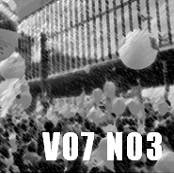Abstract
This paper seeks to establish connections between the four phases of the Industrial Revolution and architectural utopias in architecture and urban design. We start with an overview of the four phases of industrialization, trying to establish connections to the respective architectural and urban trends at each phase. We argue that in the same way the Second Industrial Revolution and its new mass production system influenced some Modern utopias at the beginning of the 20th century, the Third and Fourth Industrial Revolution methods have boosted new contemporary utopias. In order to illustrate this thesis, we looked at examples of different scales: consumer products, building components, housing units and urban design. We concluded that the main difference between modern and contemporary utopias is a shift from top-down to bottom-up processes across the different scales. New parametric CAD software and personal production machines, such as CNC-routers, laser cutters and 3D-printers, and the concept of mass-customization, are making it possible for users to be more participant in the production of their own products, homes, and even the urban spaces. The paper ends with an inquiry about which will be the next utopias, based on the technologies expected to reach tipping points in the next decades.
References
BENJAMIN, Walter. Passagens. São Paulo and Belo Horizonte: Imprensa Oficial and UFMG, 2006.
LE CORBUSIER. The city of tomorrow and its planning, New York: Dover, 1987.
FABCITY. Locally productive, globally connected self-sufficient cities. Whitepaper. Access in: July, 31st, 2016. Available at: http://fab.city/whitepaper.pdf
FRIEDMAN, Yona. Une utopie réalisée. Paris: Musée d’Art Moderne de la Ville de Paris, 1975.
GROPIUS, Walter, “La vitalidad de la idea de la Bauhaus” In. WINGLER, Hans M.. La Bauhaus, Barcelona: GG, 1980, p. 68-71.
JENCKS, Charles. The language of post modern architecture. London: Academy Editions, 1977.
KOLAREVIC, Branko. Architecture in the Digital Age: Design and Manufacturing. London: Taylor & Francis, 2003.
MARTINS, Carlos Alberto F.. Razón, ciudad y naturaleza. La génesis de los conceptos en el urbanismo de Le Corbusier. Madrid: ETSAM, 1992.
MAXWELL, Ian A. The fifth industrial revolution. Chemistry in Australia, Mar 2014, p.38. Access in: July, 31st, 2016. Available at: http://connection.ebscohost.com/c/articles/94768986/fifth-industrial-revolution
PILGRIM, Dianne H.; TASHJIAN, Dickram; WILSON, Richard Guy. The Machine Age in America 1918-1944. New York: Harry N. Abrams, Inc., 1986.
PINE, Joseph. Mass Customization. The new frontier in Business Competition. Boston: Harvard Business School Press, 1999.
PROUVÉ, Jean. Une architecture par l’industrie. Zurich: Les Editions d’Architecture Artemis, 1971.
RYKWERT, Joseph. The seduction of place: City in the Twenty-First Century. New York: Pantheon Books, 2000.
SCHWAB, Klaus. The Fourth Industrial Revolution: what it means, how to respond. World Economic Forum website, 14/Jan/2016. Access in: July, 31st, 2016. Available at: https://www.weforum.org/agenda/2016/01/the-fourth-industrial-revolution-what-it-means-and-how-to-respond/
SIMMEL, Georg. The Metropolis and the Mental Life. In. SENNET, Richard. Classic Essays on the Culture of the Cities. Englewood Cliffs: Prentice Hall, 1969, p. 47-60.
SINGER, Natasha. Mission Control, Built for Cities - I.B.M. Takes ‘Smarter Cities’ Concept to Rio de Janeiro. The New York Times, March 3, 2012. Access in: July, 31st, 2016. Available at: http://www.nytimes.com/2012/03/04/business/ibm-takes-smarter-cities-concept-to-rio-de-janeiro.html?_r=0
TAFURI, Manfredo. Progetto e utopia. Architettura e svillupo capitalistico. Bari: Laterza, 1977.
TÖNNIES, Ferdinand. Community and Society. Mineola: Dover, 2002.
TOWNSEND, Anthony M. Smart Cities - Big data, civic hackers, and the quest for a new utopia. New York: Norton, 2013.
WORLD ECONOMIC FORUM. Deep Shift Technology Tipping Points and Societal Impact. Global Agenda Council on the Future of Software & Society. Survey Report - September 2015. Davos: World Economic Forum, 215, p.5. Access in: July, 31st, 2016. Available at: http://www3.weforum.org/docs/WEF_GAC15_Technological_Tipping_Points_report_2015.pdf
WWW.3DERS.ORG. U.S. President Obama viewed world's first 3D Print Canal House. 24/mar/2014. Access in: July, 31st, 2016. Available at: http://www.3ders.org/articles/20140324-us-president-obama-viewed-3d-print-canal-house.html.
I accept that PARC Research in Architecture and Building Construction journal perform, on the original file approved for publication, revisions and modifications in orthoghaphic, grammar and standard issues.
I give to PARC Research in Architecture and Building Construction journal the rights of first publication of the revised version of my paper, licensed under the 'Creative Commons Attribution' license (which allows sharing the work with the recognition of first authorship and publication in this journal).

